The Ultimate Manali Travel Guide: How to reach and get around the mountain town.
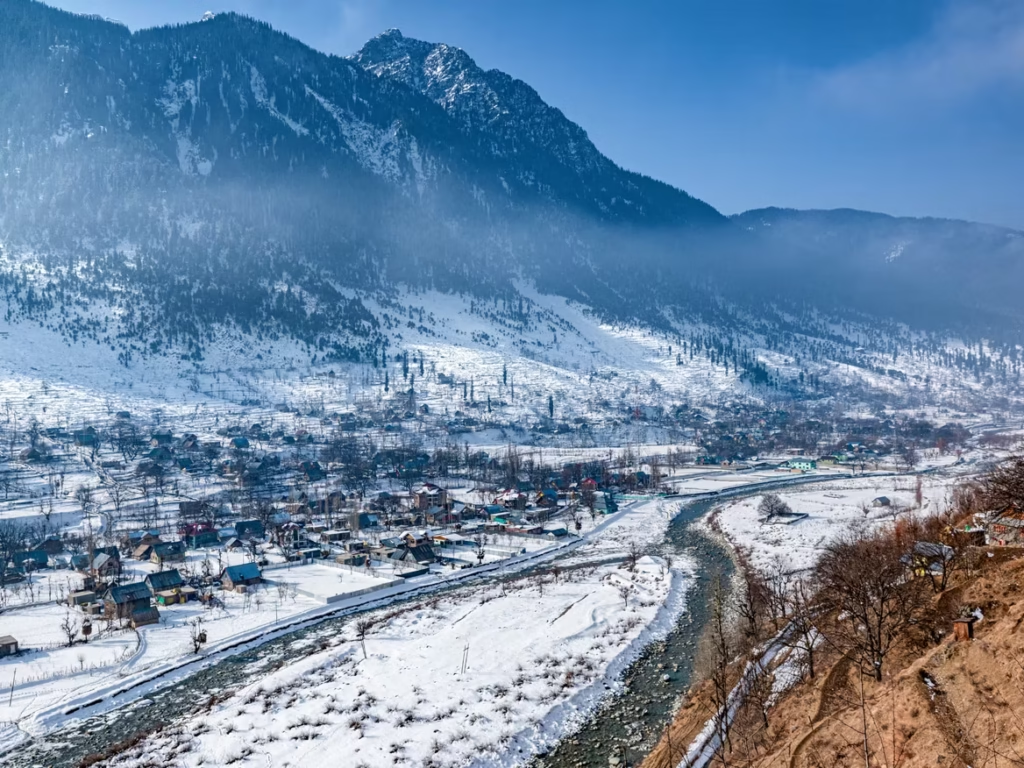
Situated high up in the Himalayas, Manali has rightfully earned its reputation as one of India’s top tourist destinations. Framed by snow-capped peaks and boasting lush green forests, this quaint mountain town promises postcard-perfect views at every turn. From adventures like rafting and skiing to cultural treasures like ancient temples, Manali attracts travelers seeking both adrenaline rush and serenity. The laidback cafes, Tibetan monasteries, and local handicraft shopping beckon as well. Regardless of whether you seek nature’s embrace or prefer soaking in history, Manali delivers ample opportunities. Its cool and pleasant climate during summer provides welcome respite from India’s sweltering heat. Reaching this mountain gem is easy, and getting around quite hassle-free. This guide will equip you to plan an immersive trip to Manali. The astounding beauty of Manali during the Winters (Source: canva) Arriving in Manali: Journey to the Mountains Manali is well connected to the other parts of India through air, road and rail. You can reach the hill station through the following methods: By Air The nearest airport is Bhuntar Airport located around 50km from Manali in the Kullu district. It has regular flights from Delhi, Chandigarh, Shimla and other major cities by airlines like Air India, IndiGo, SpiceJet, etc. Taxis charge about ₹2000 to reach Manali from the airport. One can also take a bus which costs around ₹200 per person. By Rail The closest major railway station is Joginder Nagar railway station, approximately 165km from Manali. It falls on the Pathankot–Jogindernagar narrow gauge railway line. The train route is incredibly scenic but takes around 10 hours from Pathankot. From Joginder Nagar you can hire a taxi or take a Himachal Road Transport Corporation (HRTC) bus to cover the 6 hour onward journey to Manali. By Road The most popular way to get to Manali is by road. National Highway 21 connects Manali to Chandigarh and further to other major cities. The highway is well maintained with scenic views throughout. Luxury Volvo buses by HRTC provide a comfortable overnight journey from Delhi, taking about 14 hours. You can also hire a private taxi or self-drive your own car on this route. Zigzag roads win you over with mountain vistas. Stopovers in towns like Karnal and Bilaspur can break the trip. If you want to plan a road trip from Delhi-Manali, read this blog. Train taking a sharp turn on a mountainous bridge (Source: canva) Day Trips from Manali: Nearby Gems to Explore With its location in the hills, Manali serves as an ideal base to explore scenic destinations nearby. Some recommended day trips are: Rohtang Pass Located 51 km from Manali, the high mountain pass of Rohtang lies at an altitude of 3978 m. Visit to see snow even in summers and gorgeous views. Requires permit. Solang Valley Just 13 km from Manali, Solang is renowned for adventure sports like paragliding, zorbing and skiing. During summer you can hike here or picnic by the river. Naggar Village This quaint village 20 km from Manali has European style castle, temples, museums and art galleries to explore on a day trip. Manikaran The religous town of Manikaran located 45 km from Manali attracts pilgrims to its hot springs and beautiful Sikh gurudwara. With so much natural beauty around, taking day trips from Manali allows you to make the most of your time there. Follow the tips above for memorable short excursions. Morning View of Manikaran across the shore (Source: canva) Manali awaits! With its idyllic setting amidst snow-clad mountains and spiritual aura, Manali casts a spell on all who visit. Reaching this Himachal town is easy by air, road and rail. Navigating within Manali can be done conveniently by buses, rental vehicles, bicycles or on foot. The destinations near Manali like Rohtang Pass and Solang Valley promise adventure and stunning vistas. Take scenic day trips and partake in activities like paragliding for once-in-a-lifetime experiences. From ancient temples to gushing rivers, Manali is a gateway to some of India’s most prized natural wonders. You can also check out this free AI planner travel to better plan your trips as per you desirable preferences and budget constraints. Free AI Travel Planner
Planning a Trip to Manali this Summer? Here’s What You Need to Know About the Weather
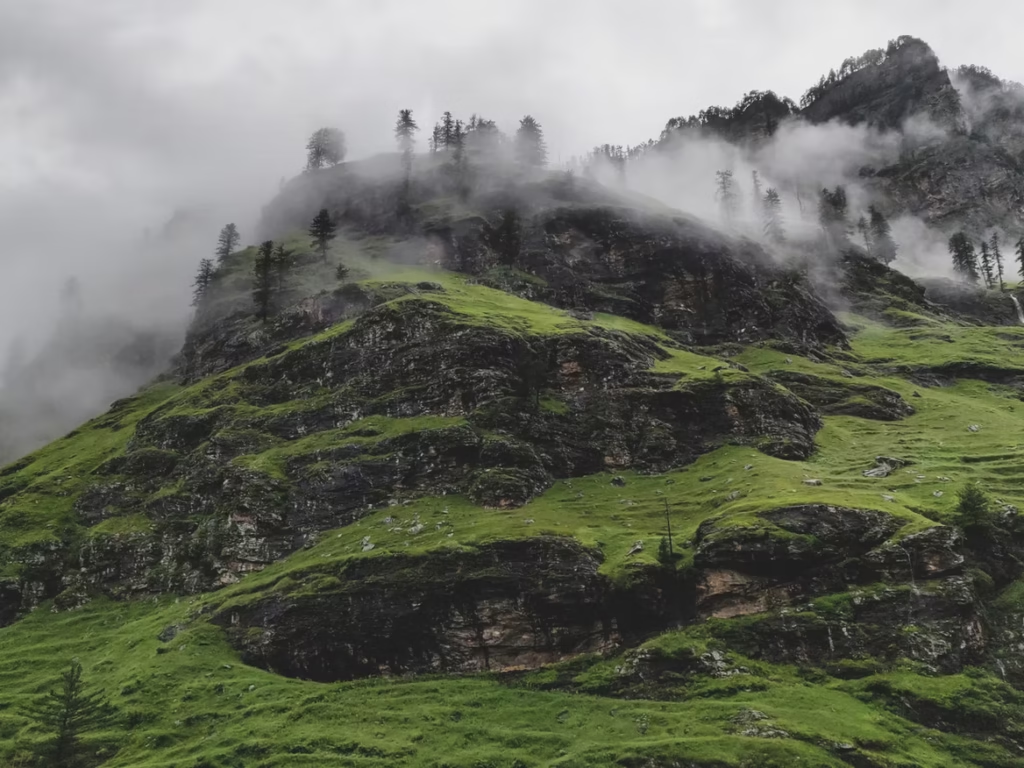
Nestled high up in the magnificent Himalayan mountains of Himachal Pradesh, Manali stands as one of India’s most idyllic and popular summer retreats. As the sweltering summer months approach, you may be dreaming of planning a rejuvenating escape to this picturesque hill station, away from the scorching heat of the plains. However, before packing your bags with gusto, it is essential to understand Manali’s fickle climate and weather patterns during the summer. The weather in Manali can fluctuate wildly and be extremely unpredictable in the summer months between May to August. Sudden downpours, chilling thunderstorms, misty clouds obscuring mountain views – the weather vagaries are manifold. View of a foggy mountain peak (Source: canva) Thus, advance planning and preparation becomes critical to truly enjoy the summer charms of Manali despite the temperamental climes. In this blog, I will provide a detailed overview of Manali’s weather and climatic conditions. You will get insights into the temperature range, humidity levels, frequency of rainfall, sunny intervals, and the impact of altitude on weather during this season. Additionally, I will share how the weather affects key summer activities like sightseeing, trekking, adventure sports, and transportation around Manali. By understanding all these facets, you can pack smartly, plan your summer holiday efficiently and make the most of your time in Manali irrespective of the weather gods’ whims! Manali’s weather: Quick glance Weather in Manali across the year (Source: cottagesinmanali) Summer (April – June) Summers see pleasant daytime temperatures in the range of 15°C to 25°C. However, humidity levels start rising to 65-70% by May end indicating the onset of monsoon. Rainfall also increases from June with occasional heavy downpours. Monsoon (July – September) The monsoon months are humid with average humidity levels spiking to 75-80%. Persistent heavy rainfall occurs with a monthly average of 350mm during peak monsoon season. Temperatures are cooler in the range of 12°C to 20°C.] Winter (December – February) Winters are dry and cold with negligible rainfall. Humidity levels drop further to 40-50%. Temperatures plummet below freezing point after sunset to -5°C with highs of about 10°C during the day. Spring (March – April) The spring months of March and April see temperatures rising to pleasant highs of 18°C to 25°C though nights can still be cool in Manali, with moderate rainfall occurring as light showers during this pre-monsoon transition period. However, sudden weather changes including snowfall at higher altitudes are common as the region moves from winter chill to summer warmth. Best time to visit Manali A camping site full of tourists (Source: canva) Now arrives the most awaited question- What is the best time to visit Manali? However, the answer is that it completely depends on your personal preferences. Here is a list of the pros and cons of visiting Manali in each of the seasons-: Summer (April – June) Pros: Warm, sunny days perfect for sightseeing and photography Can participate in adventure activities like paragliding, camping Scenic mountain views before monsoon fog sets in Fewer tourists and cheaper prices before mid-May Cons: Unexpected heavy showers start by late June with monsoon Rohtang Pass closed due to snow clearance Monsoon (July – September) Pros: Lush green valleys and fores with beautiful views Discounted rates ideal for budget travellers Great for white water rafting with raging rivers Less crowded compared to peak summer Cons: Heavy persistent rainfall leads to landslides Frequent disruption of travel due to landslides and road blockages High chances of road closures especially to Rohtang Pass Limited views due to fog and cloud cover Winter (December – February) Pros: Snow-covered landscapes look picture perfect Activities like skiing, snowboarding, snowmobiling Discounted hotel rates and fewer tourists Hot springs and spas ideal in cold weather Cons: Extremely cold temperatures ranging from -5°C to 10°C Heavy snowfall can block roads and led to being stranded Limited connectivity and accessibility due to road closures Most activities closed down during peak winter Spring (March – April) Pros: Pleasant weather with temperatures rising up to 25°C Lush valleys and flowering fruit orchards Off-season discounts on stays continue Religious festivals like Holi and Easter Cons: Sudden snowfall on higher altitudes still possible Some tourist spots remain closed before peak summer High chances of rain during March Visiting Manali in each season arrives with their own set of pros and cons. Even though some of the pros may overweigh others, visiting the hill station in every season comes out as a completely different experience. What to pack for your Manali trip? A snowy landscape in Manali (Source: Unsplash) Here are some packing recommendations for Manali for each of the four seasons round the year-: Summer (April-June) Summers in Manali have pleasant daytime temperatures, but the high altitude can lead to sun exposure. Cotton clothes that are light and airy suit the generally hot climate. Hats, sunglasses and sunscreen become essential to protect against UV rays at high altitudes. The evenings can get breezy and cooler, so carrying light jackets is advised. For outdoor activities like hiking, sturdy trekking shoes with a good grip are a must. By mid-June, monsoon showers begin, so packing umbrellas becomes vital for protection. Monsoon (July-September) The monsoon months witness heavy downpours in Manali. Rain jackets and umbrellas are a must to stay dry during the persistent showers. With trails becoming slippery, sturdy waterproof boots help maintain stability and prevent falls. Quick dry clothes that can wick moisture are recommended to handle humidity and sudden downpours during outdoor excursions. Leech socks offer protection from leeches prevalent during hikes in the rainy season. Carrying medicines for common ailments like allergies, cold and body aches provides comfort in the damp weather. Winter (December-February) The cold dry winters of Manali call for ample warm clothing. Heavy woolens including sweaters, thermals and jackets help insulate the body from the chilling cold. Snow boots with good traction and gaiters are
Mystical Landscapes: Discovering the Beauty of Ladakh
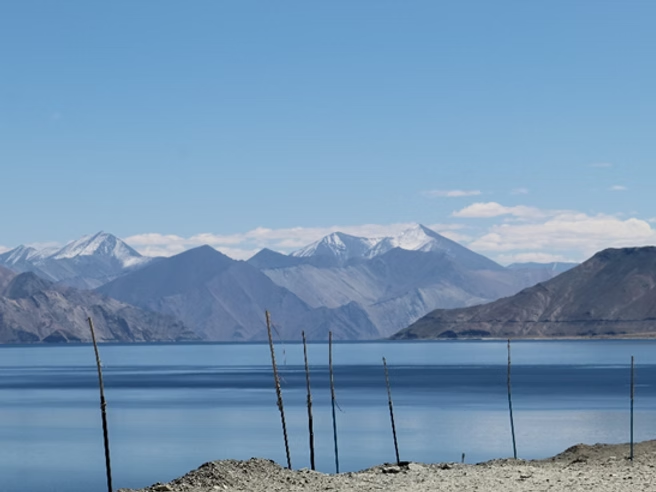
The mystic region of Ladakh, which is found in India’s far north, is renowned for its unearthly scenery and distinctive culture. Towering peaks, desolate mountains, and pristine lakes surround the area, making it the ideal vacation spot for outdoor enthusiasts and nature lovers. We’ll examine Ladakh and its natural beauty in more detail in this blog. Welcome to Ladakh, a place of breathtaking natural beauty and magical vistas that will captivate you. Ladakh, a region high in the Himalayas, is a haven for those who value nature, adventure, and spirituality. Let’s go off on a journey to explore Ladakh’s alluring beauty and learn more about this enchanted region. Himalayan Landscapes Ladakh’s breathtaking Himalayan scenery is one of its defining characteristics. Towering peaks, some of which are over 7,000 metres high, encircle the area and provide panoramic views and breath-taking vistas. Trekking through the mountainous terrain while admiring the breathtaking surroundings is enjoyable for visitors. The Markha Valley Trek, the Stok Kangri Trek, and the Chadar Trek are a few of the well-liked trekking routes in Ladakh. Ladakh is well known for its imposing mountains, which are both untamed and spectacular. You are enticed to discover the Himalayas’ magnificence by their snow-capped peaks, which form a breathtaking backdrop. Take a leisurely drive along the Leh-Manali Highway or travel to the isolated Nubra Valley, which is encircled by mighty mountains. Capture stunning views and enjoy the tranquilly of the highland setting. Credit: Unsplash Monasteries and Cultural Experiences Ladakh is also home to a number of historic monasteries that provide a window into the area’s distinct culture and traditions. These monasteries, which are positioned atop the mountains, provide breathtaking vistas and a spiritual atmosphere. The Hemis Monastery, the Alchi Monastery, and the Thiksey Monastery are just a few of the monasteries that can be visited. Additionally, the area is well-known for its energetic events, such as the Hemis Festival, which provide a distinctive cultural experience. There are numerous historic monasteries in Ladakh that radiate peace and serenity. Some of the most revered monastic complexes include Hemis Monastery, Thiksey Monastery, and Diskit Monastery, where you may observe monks chanting prayers and take in the serene ambiance. Discover Ladakh’s rich Buddhist legacy by admiring the exquisite murals, gilded sculptures, and antiquated texts that adorn the monasteries. Ladakh’s beautiful culture is an essential component of that beauty. Discover traditional artefacts, handcrafted items, and vibrant textiles in Leh’s local marketplaces. Experience performances of traditional folk dances and music that highlight the area’s rich cultural heritage. Engage in conversation with the welcoming inhabitants, indulge in regional specialties like momos and thukpa, and experience the welcoming hospitality of Ladakh. Credit: Unsplash Offbeat Destinations Ladakh is home to a number of unique locations that conventional tourist has yet to explore. For the adventurous traveller, these places provide a distinct and undeveloped experience. The Zanskar Valley, the Nubra Valley, and the Tso Moriri Lake are just a few of these unusual locations. Explore these locations to experience the tranquilly and natural beauty of the area. Pangong Tso, a dazzling lake that spans the boundary between India and Tibet, is a sight to behold. Be prepared to be mesmerised by its ethereal beauty. Visitors are in awe of the bizarre scene created by the clear blue seas and barren mountains. Spend a night camping beside a lake and take in the lake’s ever-changing colours as the sun rises and sets, illuminating the surrounding area. Explore the captivating Nubra Valley, a desert-like area hidden between imposing mountains, on an excursion. Enter a world of breathtaking sand dunes and historic monasteries by driving via the well-known Khardung La Pass, one of the highest motorable routes in the world. Enjoy a one-of-a-kind experience by riding Bactrian camels, which are distinguished by their double humps, over the immense Hunder Desert. Credit: Unsplash Adventure Activities Adventure sports like mountain biking, rafting, and paragliding are ideal in Ladakh. Mountain riding in the area is an exhilarating and exciting experience thanks to the region’s challenging terrain and high elevation. Additionally, tourists can take part in the demanding and thrilling activity of rafting in the Zanskar and Indus Rivers. Another well-liked adventure activity in Ladakh is paragliding, which provides a distinctive viewpoint of the area’s breathtaking scenery. For thrill seekers, Ladakh has a tonne of extreme things to choose from. Explore famous locations like Markha Valley, Zanskar, and Stok Kangri on exhilarating treks. On the Indus and Zanskar rivers, enjoy whitewater rafting, or try mountain biking on the difficult terrain. The rough terrain of Ladakh offers many options for rock climbing, paragliding, and star-gazing while camping. Ladakh is a place that will inspire you and make a lasting impression on your soul thanks to its mystic landscapes, rich culture, and spectacular beauty. Plan your trip to this Himalayan beauty and get lost in Ladakh’s magic, where the majesty of nature meets spiritual tranquilly. In conclusion, Ladakh is a mysterious area that provides tourists with a distinctive and rejuvenating experience. The area is ideal for a great holiday because of its Himalayan landscapes, monasteries and cultural experiences, unusual locations, adventurous activities, and local cuisine. So be ready to pack your bags and travel to Ladakh to explore its natural beauty and make lifelong memories. Credit: Unsplash
Enchanting Shimla: Exploring the Summer Capital of British India
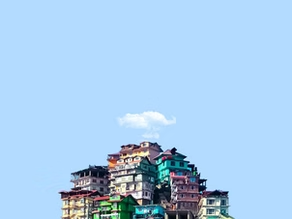
Welcome to Shimla, a charming hill town perched in the shadow of the majestic Himalayas. Known as the summer capital of British India, this alluring location never ceases to enchant tourists with its colonial elegance, breathtaking scenery, and agreeable weather. Let’s set off on a voyage to discover Shimla’s appeal, a location that emanates a nostalgic aura of a bygone period. Shimla is a picturesque hill town in Himachal Pradesh, India, and served as the summer capital of British India. The area is renowned for its mild climate, colonial architecture, and sweeping views, making it the perfect summer getaway location. We’ll examine Shimla and the enthralling experiences it provides in more detail in this blog. British Architecture Shimla is renowned for its exquisite colonial architecture, which is a reflection of its illustrious past and cultural legacy. During the colonial era, the area served as a summer getaway for British officials, and as a result, many of Shimla’s buildings and structures exhibit a distinctive fusion of British and Indian architecture. Explore structures like the Gaiety Theatre, Viceregal Lodge, and Christ Church for an insight into the colonial past of the area. The rich architectural history of the British Raj is on display in Shimla. Admire the fine craftsmanship and design as you stroll down the famous Mall Road, which is lined with attractive colonial structures. Three architectural wonders that transport you to the British era are the Gaiety Theatre, Viceregal Lodge (today called the Indian Institute of Advanced Study), and Christ Church. Credit: Unsplash Summer Retreats Shimla is the ideal location for a summer escape due to its nice climate and beautiful surroundings. Away from the rush of daily life, the area is dotted with a number of summer resorts that provide a tranquil and beautiful setting. Kufri, Chail, and Mashobra are a few of Shimla’s well-liked summer resorts. In these stunning settings, tourists can engage in activities like horseback riding, camping, and trekking. Shimla has been a popular summer destination since the British era, and this trend has not changed. Visit the magnificent Rashtrapati Niwas, sometimes referred to as the Viceregal Lodge, which served as the British Viceroy’s summer home. Explore the architectural wonder that formerly housed the most important political personalities of the era while strolling around the lovely gardens. Credit: Unsplash Himalayan Landscapes Shimla is surrounded by spectacular Himalayan scenery that provides an enthralling vista. Visitors can enjoy a lovely drive through the picturesque valleys or go on a walk over the Himalayan mountains. The Churdhar Trek, the Hatu Peak Trek, and the Shali Tibba Trek are a few of the well-known trekking routes in Shimla. The Himalayas surround Shimla, providing breath-taking views of snow-capped peaks and lush valleys. Ride the Shimla-Kalka Toy Train, a UNESCO World Heritage Site, and take in the beautiful scenery as you go. Visit the Jakhoo Hill, which is the site of the historic Jakhoo Temple and provides sweeping views of the surroundings. Credit: Unsplash The Ridge The Ridge, located in the centre of Shimla, provides sweeping views of the neighbouring snow-capped hills and verdant valleys. Take a leisurely stroll along the Ridge to experience the tranquilly. Admire the magnificent neo-Gothic architecture of Christ Church, one of the oldest churches in North India, and take in the lively atmosphere produced by the neighborhood’s street merchants, musicians, and artists. Credit: Unsplash Shimla Heritage Walk Take a heritage walk to learn more about Shimla’s fascinating past. Discover the town’s historical significance under the British occupation by exploring the colonial-era structures and heritage museums. A wealth of artefacts, images, and papers from the town’s past can be seen at the Shimla Heritage Museum. Shimla is a must-visit hill station in India because of its alluring beauty, charming Britishness, and peaceful atmosphere. Shimla is the ideal getaway whether you want to immerse yourself in history, take in the breathtaking Himalayan vistas, or just relax in nature. Plan your trip to Shimla and discover the allure of this summer capital of British India, where the splendour of the past and the present coexist in perfect harmony. In conclusion, Shimla is a charming location that provides visitors with a distinctive and rejuvenating experience. The area is the ideal location for a special trip because of its British architecture, summer retreats, Himalayan landscapes, local cuisine, and shopping. So grab your belongings and travel to Shimla to discover the charming summer capital of British India. Credit: Unsplash
Serenade in Srinagar: Exploring the Jewel of Kashmir
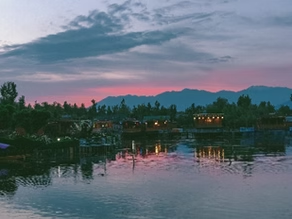
Welcome to Srinagar, the gem of Kashmir hidden in a valley surrounded by majestic mountains and snow-capped peaks. For those who enjoy the outdoors, are interested in history, or just want a peaceful getaway, this gorgeous city is a paradise. Srinagar offers the ideal fusion of beauty, culture, and tranquilly with its quiet Dal Lake, Mughal gardens, and alluring houseboats. Let’s set off on a journey to discover Srinagar’s alluring appeal and enjoy the best of Kashmir tourism. Dal Lake One of the most well-known sights in Srinagar is Dal Lake, which is located in the city’s centre. The lake is encircled by snow-capped mountains and abundant vegetation, creating a tranquil and beautiful atmosphere. Shikara rides on the lake are available for tourists to soak in the beautiful scenery while experiencing a traditional Kashmiri boat ride. There are a number of houseboats on the lake as well, which provide a distinctive and opulent experience. As soon as you step foot on Dal Lake, Srinagar’s famous waterway, you will be transported into a peaceful world. Sail through breathtaking mountains and floating gardens as you cruise the seas on a traditional Shikara boat. Observe how the lake’s surface is reflecting the sunset’s brilliant hues, which creates a lovely atmosphere. Enjoy the most romantic getaway possible by staying on a lavish houseboat and waking up to sweeping views of the tranquil lake. Credit: Unsplash Mughal Gardens The stunning Mughal gardens in Srinagar are a symbol of the city’s illustrious past and vibrant present. The well-kept gardens have many different kinds of flowers, trees, and water features. In Srinagar, some of the well-known Mughal gardens are Shalimar Bagh, Nishat Bagh, and Chashme Shahi. By visiting Srinagar’s exquisite Mughal gardens, you may fully experience the splendour of the Mughal Empire. Take a stroll through terraced gardens that are decorated with stunning fountains, vivid flowers, and water features that cascade. The enduring beauty and magnificent architecture of the former age are truly on display in the Mughal gardens. Credit: Unsplash Houseboat Experiences Staying on a houseboat is one of Srinagar’s unique experiences. The houseboats, which are docked on Dal Lake, provide an opulent and relaxing stay. The houseboats provide breathtaking views of the lake and neighbouring mountains and are fully furnished with contemporary conveniences. It’s the ideal way to appreciate hotel luxuries while taking in Srinagar’s splendour. Credit: Unsplash Local Cuisine The cuisine of Srinagar is renowned for being flavorful and aromatic. The Mughal and Kashmiri past of the city has an impact on the regional cuisine, which offers both vegetarian and non-vegetarian options. Popular meals include Yakhni, Gushtaba, and Rogan Josh. Additionally, tourists can sample the well-known Kashmiri Kahwa, a traditional tea flavoured with saffron, cinnamon, and cardamom. Enjoy the flavours of Kashmiri food, which is renowned for its flavorful and aromatic dishes. A multi-course supper featuring exquisite treats like Rogan Josh, Yakhni, and Kashmiri Pulao is the traditional Wazwan feast. Enjoy the flavours of Kahwa, a type of Kashmiri tea, as well as the sweet treats phirni and shufta. Credit: Unsplash Shopping With its wide selection of traditional goods and trinkets, Srinagar is a shopper’s dream. Visitors can shop for Kashmiri jewellery, silk carpets, and Pashmina shawls. Saffron, one of the priciest spices in the world, is another product that the city is renowned for. Visit the floating vegetable market on Dal Lake to experience the thriving local culture of Srinagar. Get up early to witness the bustling scene of merchants selling fresh food from their vibrant shikaras. Experience the distinctive way of life that revolves around the lake while interacting with the locals and soaking up the lively environment. Credit: Unsplash Hazratbal Shrine Visit the famed Hazratbal Shrine to learn more about Srinagar’s spiritual side. On the shores of Dal Lake, this immaculate mosque made of white marble has a holy relic that is thought to be a fragment of the Prophet Muhammad’s hair. Admire the shrine’s stunning architecture, savour the tranquilly, and take in the commitment of the devotees as they offer prayers. Credit: Unsplash The month of June in Srinagar offers good weather with warm to chilly temperatures, giving it the perfect time to experience the city’s captivating splendour. Check the regional travel regulations as you make your vacation plans, and be aware of the cultural sensitivity of the area. With its quiet Dal Lake, captivating Mughal gardens, and houseboat excursions, Srinagar welcomes you to a world of romance, peace, and unspoiled beauty. Travel to Kashmir’s crown jewel to experience the attraction and charm of this mesmerising city. Prepare yourself to make lifelong memories in the enthralling city of Srinagar. In conclusion, Srinagar is a lovely city that provides a distinctive and rejuvenating respite from the rush of urban life. The city’s tranquil Dal Lake, beautiful Mughal gardens, and adorable houseboats provide the ideal scene for a calm and romantic holiday. The city’s rich culture and food may also be explored by visitors, giving it the ideal place to spend an unforgettable vacation.
From Delhi to Leh Ladakh: An AI-Powered Travel Guide for Adventure Seekers
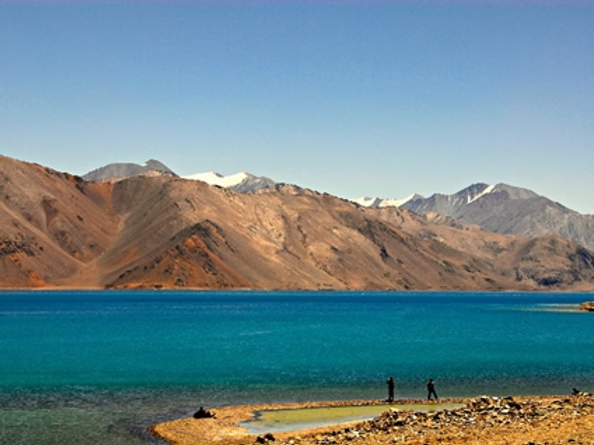
Leh Ladakh, located in the heart of the majestic Himalayas, is a paradise for outdoor enthusiasts and nature lovers. It attracts tourists looking for an adventurous experience thanks to its breathtaking scenery, challenging terrain, and rich cultural history. This AI-powered travel guide will take you on a fictitious journey from Delhi to Leh Ladakh while offering important details, advice, and suggestions to assist you in organising your action-packed excursion to this gorgeous locale. We will provide a brief overview of Leh Ladakh as an adventure destination, the importance of effective travel planning, and the benefits of AI-powered travel guides. Leh Ladakh is a region in the Indian state of Jammu and Kashmir that is known for its high-altitude deserts, snow-capped mountains, and pristine lakes. It is a popular destination for adventure seekers who are looking for unique experiences such as trekking, mountain biking, and river rafting. Effective travel planning is crucial for a successful trip to Leh Ladakh. The region is remote and has limited infrastructure, which means that travellers need to plan their itinerary carefully. An AI-powered travel guide can help travellers optimize their itinerary and make the most of their time in Leh Ladakh. AI-powered travel guides use algorithms to generate optimized travel itineraries based on user preferences, interests, and constraints. They can help travellers save time and money by recommending the best routes, accommodations, and activities. Credit: Unsplash Understanding Leh Ladakh and Its Attractions Even the trip to Leh Ladakh from Delhi is an adventure. The easiest method to get to Leh is by air, as there are frequent flights from Delhi to the Kushok Bakula Rimpochee Airport in Leh. Beautiful aerial views of the Himalayan range are available during the journey. As an alternative, you may set out on a road excursion that would take you about 1,000 kilometres. You pass through stunning scenery, high mountain passes, and quaint villages during the drive. Be ready for long driving days and get acclimated to the various elevations. You will be amazed by the abundance of stunning things that Ladakh has to offer. Visit the renowned Pangong Tso Lake, famous for its shifting blue hues. Discover the Nubra Valley, where double-humped Bactrian camels can be seen among the sand dunes. Don’t forget to visit the historic monasteries in Hemis, Thiksey, and Diskit to experience the region’s spiritual character. The Shanti Stupa, Magnetic Hill, and the Leh Palace are a few more must-see sites that exhibit Ladakh’s own appeal. Leh Ladakh is located in the northernmost part of India, bordering China and Pakistan. It is a high-altitude desert region that is known for its unique geography and breathtaking landscapes. The region is home to several snow-capped mountain ranges, including the Himalayas, Karakoram, and Zanskar. Ladakh is a playground of exhilarating adventures for those who enjoy exploring new places. Engage in a strenuous walk to the breathtaking Markha Valley or the Chadar walk’s ice wonderland during the winter. White-water rafting in the Zanskar or Indus River will give you an adrenaline boost. Explore the rough landscape while mountain biking, or test your stamina while riding a motorbike at a high altitude along the renowned Leh-Manali Highway. There are several options available to suit all types of adventure seekers. The colourful festivals and rich cultural legacy of Ladakh are well known. Visit the traditional Ladakhi villages and engage with the kind and welcoming natives to fully experience the culture of the area. Observe the vibrant Hemis Festival, where monks perform masked dances and highlight the local traditions. Enjoy traditional Ladakhi food, including thukpa (noodle soup), momos (steamed dumplings), and butter tea. A trip from Delhi to Leh Ladakh is a once-in-a-lifetime adventure. Ladakh offers adventure seekers an amazing experience with its breathtaking landscapes, heart-pounding activities, and rich cultural history. You will be prepared to organise your itinerary, visit the top attractions, and take in the breathtaking splendour of this Himalayan wonderland by using our AI-powered travel guide. Prepare yourself for an adventure that will leave you gasping for air and wanting more. Credit: Unsplash AI-Powered Itinerary Planning We will discuss how AI-powered itinerary planning can help travellers plan their trip to Leh Ladakh. We will cover pre-trip planning with AI assistance, must-visit destinations in Leh Ladakh, and real-time updates and recommendations. It may be thrilling and overwhelming to plan a trip because there are so many factors to take into account and choices to be made. Thankfully, the development of artificial intelligence (AI) technology has given travellers access to a potent tool that can make the process of pre-trip planning simpler. We’ll look at how AI assistance may revolutionise your pre-travel preparation by giving you tailored advice, astute analysis, and effective planning to guarantee a comfortable and memorable vacation. AI-powered travel guides can help travelers plan their trip to Leh Ladakh by generating optimized travel itineraries. Factors such as travel duration, budget, and personal preferences are taken into consideration when generating the itinerary. Travelers can also incorporate their interests and constraints into the itinerary, such as specific attractions they want to visit or dietary restrictions. Based on the traveler’s interests and preferences, AI-powered travel guides can also suggest Leh Ladakh must-see locations. Key Leh Ladakh attractions including Pangong Tso, Nubra Valley, and Magnetic Hill are thoroughly described, along with the highlights of each location, including things to do and sites of interest. There are also suggestions for tailoring the schedule based on travel time and individual preferences. Leh Ladakh is a place of breathtaking natural beauty and rich cultural diversity, offering a variety of destinations that will amaze you. Each place has its own special appeal, from the tranquil Pangong Tso Lake to the mysterious y, from the magnetic draw of Magnetic Hill to the spiritual aura of monasteries like Hemis and Lamayuru. Plan your trip to Leh Ladakh, immerse yourself in the magic of these must-see locations, and make lifelong memories.
Spiti Valley best time to visit in 2023
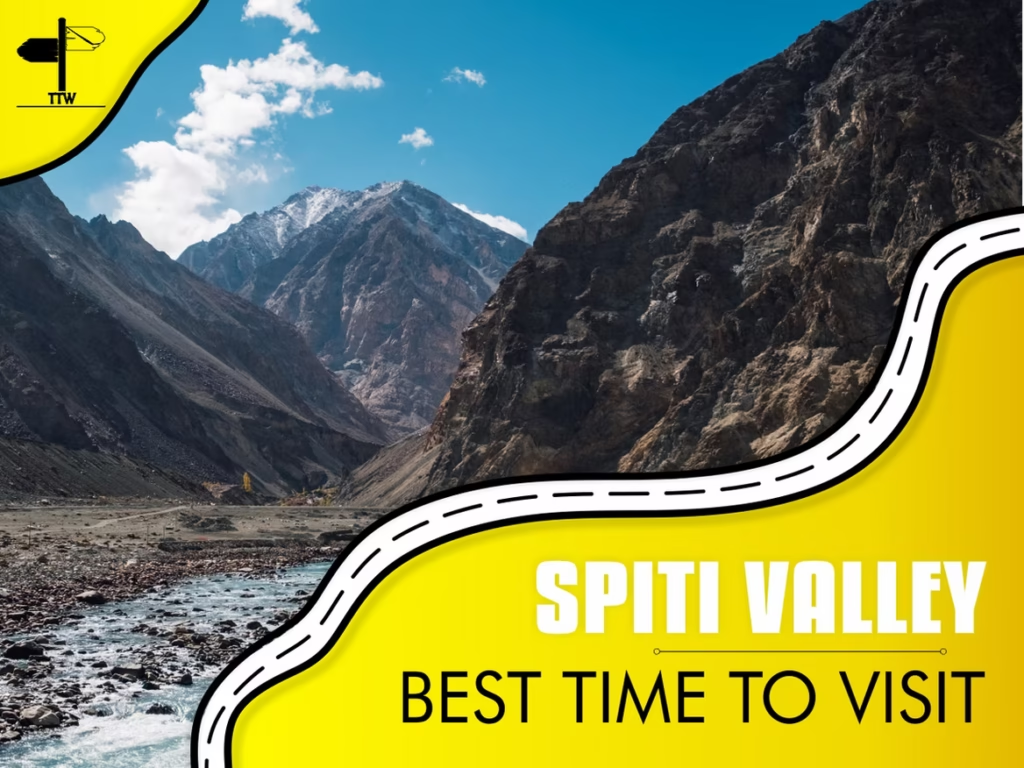
Travel to Spiti Valley at the best time to visit famous Monasteries, Parks, Villages, and Markets & enjoy local dishes with once in a lifetime experience of river rafting in Kullu valley. Spiti Valley is such an exciting place to visit for its natural beauty and cultural heritage. The high mountain passes, still, blue lakes, mother nature, and gushing waterfalls add to the charm of the place when you visit Spiti valley on the right and best time with complete travel or visit guide, information on tour package, things to do, attractions and stays in Spiti Valley. Planning your trip with locals in Spiti Valley. Don’t be concerned, we’ve got you covered. Check out our guide on the best time to visit Spiti Valley to know when there is fantastic weather and a beautiful season to explore the beauty of Lahaul Spiti Valley. Highlight: About Spiti Valley Things to do in Spiti Valley Things to avoid in Spiti Valley How to pack for Spiti Valley Spiti Valley Best Time To Visit in 2023 A brief itinerary for Spiti Valley Best way to explore Spiti Valley Where to stay in Night at Spiti Valley Estimate Travel Cost for Spiti Valley About Spiti Valley Credit: unsplash The Spiti Valley, located in the northeastern part of Himachal Pradesh, a piece of land between Tibet and India, is one of the coldest desert mountain valleys in India. This sparsely populated valley on the Tibetan Plateau showcases the rich culture of Buddhist traditions. Most adventure seekers and trekkers are well-versed in the allure of this destination and have made Spiti Valley a regular stop. This area is home to small villages, monasteries, pristine rivers, green meadows, snow-capped mountains, and friendly locals who live a simple life! Convince your mind and heart to join you on a colorful adventure and go now! Things to do in Spiti Valley Credit: freepik.com Spiti is home to some of the most important Buddhist monasteries in the world. The three most important monasteries are Tabo Monastery, Dongyu Gompa, and Key Gompa. Make a point of visiting at least one of these. One of the best ways to experience life in Spiti Valley is to explore the different villages dotted around the valley. Each village has its own unique character and sights worth seeing. Some of the most popular villages to visit are Kaza, Langza, and Hikkim. Spiti Valley is home to some of the most beautiful lakes in the world. Some of the most popular ones to visit are Chandratal, Suraj Tal, and Pin Tal. While ascending this lovely valley, look out your window at the charming little villages and scenic mountain passes that will make your ride more memorable. When you arrive in Spiti, explore the dozens of monasteries and breathtaking lakes, as well as participate in local activities and festivities that are sure to lift your spirits! Things to avoid in Spit Valley Credit: freepik.com Spiti valley is one of those once-in-a-lifetime spots for many. Incredibly remote, vastly away from man-made environment vastly different from the rest of India, and challenging to reach but try to avoid below: A Spiti valley trip is best enjoyed when you visit it at the best time, Enjoy the surroundings never try to rush and travel hundreds of kilometers in a day. Spiti is unlike anywhere else you’ve ever been the road is always under construction so it’s better to be late than never, Spiti Valley is a high-altitude place throughout the valley and is not something to take lightly. Not trying local food is your biggest mistake as you are missing some world-famous mouth-watering dishes you will love a lot. Spiti valley is known for its sweet weather but that is not the case for nights as this place’s temperature drops rapidly to zero degrees in a matter of time so always avoid packing less warm clothes. Do not drive at night the road throughout Spiti is perilous, to say the least, and you should definitely not drive on them, especially at night. How to pack for Spiti Valley Credit: pexels.com Preparing for Spiti Valley is not just about packing a bag and leaving; it requires solid planning in advance. Situated in the northeastern part of India, covered with snow-capped mountains, one needs to carry the right woolen clothing and accessories for high-altitude treks. During the day, you may need to put on light layers (woolen and cotton clothes) and add thermals or heavy jackets at night. Regular jeans, thick trousers, a pair of socks, caps, scarves, trekking shoes, sunglasses, full-sleeved shirts, sweatshirts, gloves, mufflers, and fleece jackets all depend on the season you choose to visit Spiti. Spiti Valley best time to visit in 2023 Image by jcomp (freepik.com) Summers are the best time to travel to Spiti Valley and enjoy its warm and pleasant temperature of 25 degrees during the day with a nightly drop of 3-4 degrees. Before the arrival of summer, the roads are blocked by heavy snowfall and are, hence, closed. Tourists are advised to consider the months of May–June, and September–November for their visit. Visiting Spiti in May or June is a mistake. Though the weather might be good, you’ll be sharing the remote ancient sites with droves of domestic tourists, as May and June see the highest amount of tourism throughout India. Since Spiti sits in a rain shadow, it’s one of the best places to visit in monsoon meaning July or August are go’s! Heading out on a Spiti Valley trip in September is even better with fewer people, lower prices, and the best part: harvest season! A brief itinerary for Spiti Valley Credit: freepik.com Most common Spiti valley travel visits range between 10 and 20 days. You have plenty of space to visit all the places we have mentioned in “Things to do in Spiti Valley,” but
The Ultimate Travel Guide to Ladakh in 2022
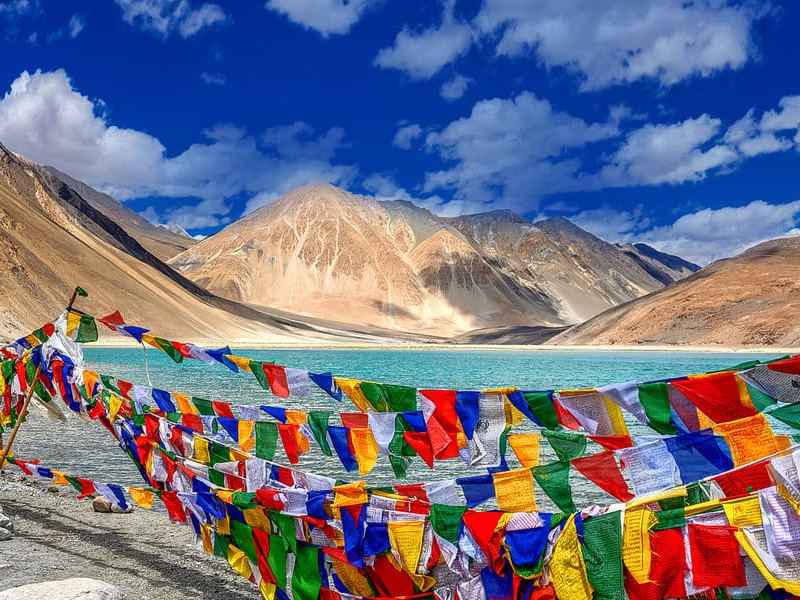
Known as the ‘Land of High Passes’, tucked away in the confines of the Kunlun Mountains and the Himalayas, Ladakh is a natural wonder. Considered to be one of the most beautiful regions in India, Ladakh is clothed in glory with barren cold desert, snow-draped mountains, quaint gompas, striking blue water bodies, multi-colored flags fluttering in the air, and sightings of Bactrian camels traversing the deserts. It is spectacularly an embodiment of all things beautiful and serene. The remoteness of the region coupled with rocky terrains of mountains and cold air breezing through is what makes Ladakh a perfect place for anyone seeking to experience some time away from the ordinary and revel in the extraordinary. A haven for adventure enthusiasts, the entire length of Ladakh is brimming with things to do, and places to visit and explore. Here is a list of guides you might want to consider before you plan your trip to Ladakh: Best Time to Visit Ladakh: When to go? The most ideal time to visit Ladakh would be in the summer months from June to September. The roads of the Srinagar Leh highway and Leh-Manali highway open up by May to mid-July and hence serves as the perfect time to plan a road trip along this famous and magnificent road. The roads are also open during the monsoon months from end-July to August but the sludge on the highway proves to be very challenging. By October, the roads are closed off from the world due to heavy snowfall. The only way to reach the place is by flight. But winter in Ladakh is very mesmerizing and an experience to cherish for a lifetime. How to reach Ladakh? By Air: The Kushok Bakula Rimpochee Airport in Leh is the best option to reach Ladakh. It is well connected to other major cities of India. Flight bookings are available throughout the year. By Train: Ladakh does not have a functioning railway station. However, the closest train station is Jammu Tawi in the city of Jammu. You can hire a taxi or bus to reach Ladakh from here on. By Road: The road network in Ladakh is well connected to other major cities of India. However, the roads are only open for six months of the year, and from November to April, the roads are closed due to heavy snowfall. However, the Delhi-Manali-Leh highway and Delhi-Srinagar-Ladakh routes are famous for their captivating views which makes for a memorable road trip. Places to Visit in Ladakh: Where to go? God has blessed Ladakh with some of the most beautiful and magnificent places on earth. Whether it is a long trek or a short trip, there are many places where you can visit and enjoy the natural beauty of Ladakh. These places are the perfect getaway to rejuvenate your soul. For the uninitiated, these places are some of the best places to visit in Ladakh. 1. Nubra Valley Credit: Getty Images One of the most beautiful destinations in Leh, Ladakh, Nubra valley is a gem waiting to be explored. From aged old monasteries to bountiful orchards, this region of Leh, Ladakh is sandwiched between Kashmir and Tibet. The breathtaking view of the valley where sights of dunes coupled with herds of Bactrian camels can be witnessed is what makes Nubra Valley even more appealing. 2. Zanskar Valley Credit: Trek and Trails An enchanting semi-desert region in Kargil, Ladakh, Zanskar Valley is truly a work of art. The sparkling clean rivers, snow-capped mountains, enthralling landscapes, and pleasant weather serve as a perfect destination to escape the hectic reality and relish in the best of nature. The mountain range of Zanskar is part of the Tethys Himalayas hence it offers a spellbinding view into the panoramic trans Himalayan region. 3. Pangong Lake Credit: Jagran Josh Pangong Lake or Pangong Tso is one of the most significant tourist attractions in Ladakh. Located at a height of almost 4,350 meters above sea level, it is said to be one of the highest altitude lakes in Ladakh. A beautiful water body so blue and serene that captivates anyone that visits the place, Pangong Lake also serves as a photographer’s paradise. The tall mountains surrounding the lake, ducks wandering on the banks, colored flags swaying in the wind, and the clear blue sky all add to the charm of the lake. 4. Tso Moriri Credit: Himachal Watcher An emerald lake known for its spellbinding beauty, Tso Moriri is a must-visit place in Ladakh. The sheer beauty of this lake combined with the vast expanse of the blue sky and the tall barren mountains as the backdrop with marshlands and wetlands around the lake makes the entire length of Tso Moriri majestic. Though lesser known than Pangong Lake, Tso Moriri rightfully stands as a tourist favorite for offering nothing but the best to its visitors. Things to do in Ladakh: What to do? If you are planning a vacation to India, you should know that the main attraction is Ladakh. There is a lot of beauty and adventure to be found in this region. This section enlists all the things you can do on your Ladakh trip. 1. Chadar Trek A thrilling and possibly one of the most exhilarating trekking experiences over the frozen ice carpet of the Zanskar river. Loved by adventure enthusiasts for its taxing yet exciting route, the trek is very strenuous and daunting even for experienced trekkers. The temperature drops below sub-sub-zeroes. Regardless of the difficulty, the nights spent in caves, sightings of exotic wildlife, traversing across frozen rivers with sparkling blue water flowing in gaps, and walking along the barren yet majestic mountains are what make this trek an experience to treasure for a lifetime. 2. Bactrian Camel Safari A famous fun and adventurous activity that can be experienced in
The Ultimate Travel Guide for Kashmir
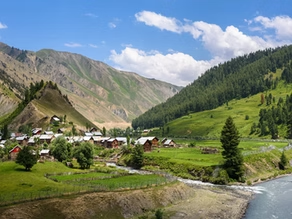
Nestled in the foothills of the mighty Himalayan Mountain ranges, the Kashmir valley is bestowed with the best of nature’s gifts in terms of beauty and grace. No amount of words will ever measure up to meet the standard of beauty Kashmir holds unless you visit the place and witness it yourself. Considered to be one of the most exotic travel destinations in India, Kashmir offers an array of things a visitor can experience. From the snow-capped mountains crowning the valley to the luscious meadow of gold and the floating market coupled with magnificent lakes, the so-called ‘Heaven on Earth’ calls for an experience of a lifetime. Kashmir Tourism Guide To help you experience the best of Kashmir’s offerings, here is a comprehensive list of guides that will come in handy when planning a trip to Kashmir. Where to go in Kashmir: Srinagar Credit: Klook The summer capital of Kashmir is an exotic location waiting to be explored. This majestic city is an embodiment of nature’s wonder with sparkling lakes, lofty mountains, bustling markets, splendid gardens, and various religious sites. Pahalgam Credit: Cntraveller Popularly known as the ‘Valley of Sheperd’, this town in the Anantnag district is adorned with the most mesmerizing spread of lush meadows. The Lidder river flowing in the heart of the town and the tall Himalayan mountain ranges add to the town’s picturesque quality. Sonamarg Credit: EGanderbal One of the most enticing destinations in Kashmir valley is Sonamarg also translated as the Meadow of Gold. This small mountain city set in a scenic position is the starting point for a range of hikes and adventures into the girding peaks, glaciers, and valleys. Gulmarg Credit: Make My Trip The crowning glory of Kashmir, Gulmarg is a dream destination that will surely take your breath away. A stunning town surrounded by snow-capped mountains, Gulmarg is every adventure seeker’s dream as it hosts a variety of exciting activities. What to do in Kashmir: Houseboat Stay at Dal Lake Credit: Welcome Heritage One of the most loved and recommended activities in Kashmir is the Houseboat Stay, which attracts many tourists. These houseboats are designed in pleasant Kashmiri architecture generally having luxury bedrooms, separate dining, and lounge rooms, as well as a balcony facing the lake with snow-covered mountains on the horizon. Shikara Ride at Dal Lake Credit: Adotrip Considered to be one of the best things to do in Srinagar, this simple Shikara boat ride brings instant joy and some quality quiet time away from the hustle and bustle of the city. Riding on a boat amidst the clean blue water of Dal Lake, enjoying the surrounding of snow-draped mountains, and the soft sound of the boatman’s oar breaking the surface of the water, this activity will surely be a breathtaking experience. Kolahoi Glacier Trek Credit: iStock The Kolahoi Glacier, usually referred to as the “Goddess of Light”, is a landmark valley glacier also iconic for being the highest glacier in Kashmir. Nestled below the Kolahoi mountain and above the Lidder valley, the 5 Km hanging glacier is truly magnificent in its way. The trek also provides an illustrious view of the sprawling green meadows, endearing waterfalls, and spellbinding coniferous forests. Gondola Ride at Gulmarg Credit: Picnicwale A top attraction in Gulmarg, the Gondola cable car ride is Asia’s largest and highest cable car project. The ride that takes you high in the sky offers you a bird’s eye view of Gulmarg valley covered either in a white sheet of snow or lush green vegetation. One of the cable cars moves up from Gulmarg to Kongdoor, and another one goes up from Kongdoor to Apharwat. It is about 13,500 ft above sea level and offers a view like no other. When to go to Kashmir: The best time to visit Kashmir is in the months of April to October. The summer months from April to June serve as the perfect time for activities like trekking, camping, shikara rides, houseboat stays, paragliding, and various other outdoor activities. The months from October to February are perfect for winter activities like skiing, snowboarding, sightseeing, etc. The peak tourist season starts from March to June and October to February. During these months, the bookings for flights and hotels are mostly packed; hence, prior bookings should be done. The months from July to September are not rushed for bookings and hence it can be a good time to enjoy the calm nature of Kashmir. How to go to Kashmir: By Air: The Shiekh-ul-Alam Airport in Srinagar is the most well-connected airport in Kashmir. By Train: The only functional railway station in Kashmir is the Jammu Tawi which is connected to all major cities in India. By Road: The road network in Kashmir is well established. NH 1 and NH 44 connect Kashmir to all major cities in India. Both private and state bus services are available from cities across India. What to eat in Kashmir: Nadir Monji – Nadir Monji, made from Lotus stem, is a popular snack among Kashmir residents. Served with mint dip, Nadir Monji will surely enlighten your taste buds. Dum Olav – Dum Aloo is cooked with golden fried potatoes, yogurt, ginger powder, fennel, and other hot spices to give it a unique flavor and aroma. Rogan Josh – The mutton meat is cooked and the ingredients are made with a combination of spices, yogurt, and browned onions. Rogan Josh is best savored with rice or naan bread, a healthy low-fat dish. Yakhni – Yakhni is mutton cooked in a yogurt-based gravy, and the lamb is prepared in a gravy made with yogurt, mawal flowers, onion paste, and dry mint leaves. Travel tips and cautions to keep in mind when visiting Kashmir: Check the weather updates regularly while traveling in Kashmir since, during monsoons, severe storms become prevalent. And in the winters, the temperature drops below sub-zero degrees and heavy snowfall
Chitkul: Journey to the Last Village of India
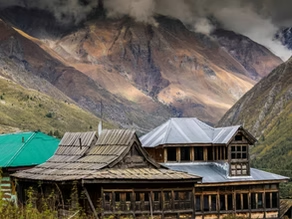
Chitkul by Oyo Sometimes, we all just want to pack our bags like Bunny from Yeh Jawani Hai Diwani and go on an adventure trip with our best friends. But unfortunately, unlike the movie, our friends never make plans. And when they do, we can never find a good destination with equal parts adventure and fun. Isn’t it? But, don’t worry! Even though we won’t be able to help you with your friends who often ditch us last minute, but we can help you with the perfect destination for your next adventure destination, i.e., Chitkul. Being the last inhabitable village of India and close to the mountains, the place experiences some extreme weather conditions but provides with the best and adventurous trekking trails to choose from. Read on to know all the stories about each place at Chitkul and what will you find at each stop, because Chitkul will leave you mesmerized for sure. Mathi Devi Temple Chitkul Fort Hydro Flour Mill Karchham Dam and Lake Rani Kanda Meadows Lamkhaga Pass Trek Borasu Pass Trek Batseri 1. Mathi Devi Temple Mathi Devi Temple by Dreamstime.com Mathi Devi Temple is dedicated to Goddess Mathi, the Goddess of Kinnaur. The temple houses three shrines. The oldest of the three is about five- hundred years old and was built by a Garhwal resident. The temple is very different from other Hindu temples as unlike other temples, Mathi Devi Temple has an ark of walnut wood covered with clothes and a tuft of yak tail. There are two poles inserted in the ark to hold it properly. The temple has a very sacred legend behind its existence. According to the legend, Lord Badrinath’s wife Mathi once found a land divided into seven different parts after Baruakhad, during their journey from Brindavan to Baruakhad via Garhwal, Sirmour, Sarahan in Bushar. When passing through the place, Mathi found that her nephew Narenas was the deity of Shuang Village, so she appointed him as the guard of the village to save the village from any impending calamities and provide the residents with care. When she moved further, she reached Chasu Village, she found that Narenas was also the deity of this village and was worshipped by the entire village. Therefore, she appointed him as the guard of this village also and gave him the responsibility to save the village from any impending calamities and provide the residents with care. When she moved forward, she reached Kamru Fort, where she found that Lord Badri Nath was guarding the Thorne of Bushahr. So, she leaves it as such and moves forward to the other divisions of the seven divisions. In this manner, she covered all the divisions and appointed different people to take care of the villages as well as the village residents while assuring them a nice living. She appointed Lord Badrinath to take care of Dhumthan subdivision, Shanshares to take care of Rakchham and Barang Nag to take care of RupinGhanti. After securing the seven divisions, she further moved forward. Finally, she reached Chitkul and made the Mathi Devi Temple as her final abode and settled there forever to take care of Chitkul while also supervising all other divisions from there. After her arrival at Chitkul, the village began to prosper, making the villagers thrive with success because of abundant crops, flora and fauna. This made the villagers worship her with high reverence and it is believed it’s the Goddess who takes care of the villagers and she is the reason that the village is doing so good. 2. Chitkul Fort Chitkul Fort by Flickr Going a little ahead of the Mathi Devi Temple is the Chitkul Fort. The fort looks more like a watchtower actually. The Fort is the tallest building in the village, other than the newly opened hotels. Chitkul Fort is a three- story structure that towers over the village. It is also referred to as ‘quila’ by the locals. Though it is also a shrine, it is commonly called fort because of its tower- like structure. 3. Hydro Flour Mill Hydro Flour Mill by way2traveller.blogspot.com While it may not sound like a very touristy place but the Hydro Flour Mill in Chitkul is one of a kind and is quite interesting to see. The water from the Baspa River is used to power the Mill as well as to grind wheat flour. 4. Karchham Dam and Lake Karchham Dam and Lake by Vargis Khan The road towards Sangla and Chitkul divides from the main highway near Karchham. Karchham is best known for a huge dam located near the town and is named after town. The dam is built over the Sutlej River. The place presents a beautiful view and is a great place to click some pictures and soak into the view. 5. Rani Kanda Meadows Rani Kanda Meadows by Raacho Trekkers A campsite which also serves as a base camp for Lamkhega Pass trek, Rani Kanda Meadows offers a beautiful site to pitch your tents and enjoy the stunning view of the place. The place looks breath- taking with mountains surrounding the area as well the green meadows which are spread in the whole area. 6. Lamkhaga Pass Trek Lamkhaga Pass Trek by Discovery Hike One of the most popular trek choices in Himalayan Mountain trek routes, Lamkhega Pass is located in the Indo- China Border area in the Dhauladhar Mountain Range and connects the north- eastern Garhwal with Himachal Pradesh. It is situated at a height of 5326 meters and offers an adventurous and breath- taking trekking experience. History has it that the beautiful Lamkhega Pass Trek, which comparatively remote, was first crossed by Marco Pallis in 1933. The trekkers can choose between the two routes, either from Harshil, a stunning hill- station in the Garwhal region and end at

